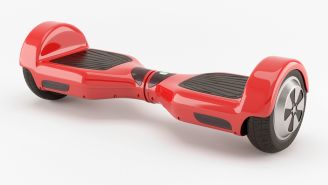Updated on February 13, 2023.
If you were to ask parents and caregivers for their all-time worst-case childcare scenarios, choking would probably be at the top of the list. And, in fact, choking is a major cause of death in children under the age of five. There is one childhood death from choking on food every five days in the United States, according to the New York State Department of Health.
Choking is also a major cause of injury in children. In addition to 2,347 choking deaths in children age 19 and younger tracked from 2001 to 2016, there were 305,814 nonfatal injuries from choking in the U.S., 73 percent of which occurred in children under age five. That’s according to a 2021 study published in the International Journal of Pediatric Otorhinolaryngology that drew on data from the Centers for Disease Control and Prevention (CDC).
Here's what you need to know about choking in kids—and how to help prevent it from happening.
Watch what kids eat (and what you serve)
More than half of choking events in children involve food, according to the American Academy of Pediatrics (AAP). Lack of supervision is a key factor.
A 2022 review published in Frontiers in Public Health noted that a lack of adult supervision while a child was eating accounted for about 40 percent of food-related choking injuries. The other 60 percent resulted from an adult serving inappropriate food or food that wasn’t properly prepared for child consumption.
The AAP and the U.S. Department of Agriculture recommend keeping the following foods away from children younger than four years of age:
- Whole round or tube-shaped foods such as grapes, cherry tomatoes, cherries, raw carrots, sausages, and hot dogs
- Nuts, seeds, and popcorn
- Dried fruit and gummy fruit snacks
- Hard pretzels
- Marshmallows
- Chunks of meat or cheese
- Hard or sticky candy
- Chunks or spoonfuls of nut butters
- Chunks of raw vegetables
- Chewing gum
- Ice cubes
When preparing food for young children, follow these steps:
- Cut raw fruit and vegetables into small slices or strips or grate, mash, or puree them before serving. Pieces should be no larger than ½ an inch. The same goes for tube-shaped foods such as hot dogs and string cheese.
- If you are serving hard vegetables like carrots, cook or steam them until they are soft enough to be pierced with a fork.
- Remove skin, peels, seeds, and pits from fruits and vegetables.
- Remove bones from fish, poultry, or meat before serving.
Practice good eating habits
In addition to carefully preparing food, be mindful about how you serve it, too. It’s important to sit and eat with children during meals and snacks so you can supervise. Remind them to take small bites and to chew their food thoroughly and swallow between bites. You can also model this good behavior when you eat.
Children should always eat sitting up, preferably at a dining table or high chair and should not be allowed to run, walk, or play while eating food of any kind, including snacks.
Don’t forget about non-food hazards. Children may also easily choke on toys with small parts, button batteries, balloons, marbles, pen caps, buttons, coins, magnets, and pet food. Even outside of meal or snack time, it’s important to be aware of what kids have in or around their mouths.
What should you do if your child is choking?
The first step is take a deep breath and try not to panic.
If your child has signs of food or some other object stuck in their throat but is still able to speak or has a strong cough, observe carefully: The child’s cough is typically more effective than back blows or other maneuvers. Don’t reach into the child’s mouth to try to grab the object or pat the child on the back; doing so could actually push the object further down the airway. To be on the safe side, call 911 because even a partial blockage could become a complete one.
If your child can’t breathe at all or has only a very weak cough, call 911 immediately. In babies less than 12 months old, perform back slaps and chest thrusts:
- Lay the infant face down, resting along your forearm. Hold the infant's chest in your hand and the jaw with your fingers and point the infant's head downward, lower than the body. Use your thigh or lap for support.
- Give up to five quick, forceful blows between the infant's shoulder blades using the palm of your free hand.
- If the object does not come free after five blows, turn the infant face-up, supporting the head, and place two fingers on the middle of the breastbone just below the nipples. Give up to five quick thrusts down, compressing the chest one third to one half the depth of the chest.
- Alternate back blows followed by chest thrusts until the object is dislodged or the infant becomes unconscious.
- If the child becomes unconscious, shout for help, give infant CPR, call 911, and try to remove the object blocking the airway only if you can see it.
In children older than 1, perform the Heimlich maneuver (also called abdominal thrusts) if they are big enough. (Performing the Heimlich maneuver on a younger or small-for-their-age child could crack their ribs.) Learn more about what to do in a choking emergency from the American Red Cross.
All parents, guardians, and caregivers should consider taking a course on child and infant CPR and rescue care through the American Red Cross, American Heart Association, or their local hospital.







